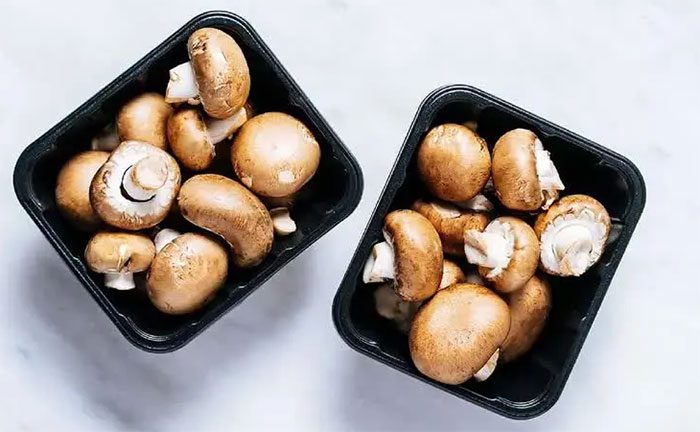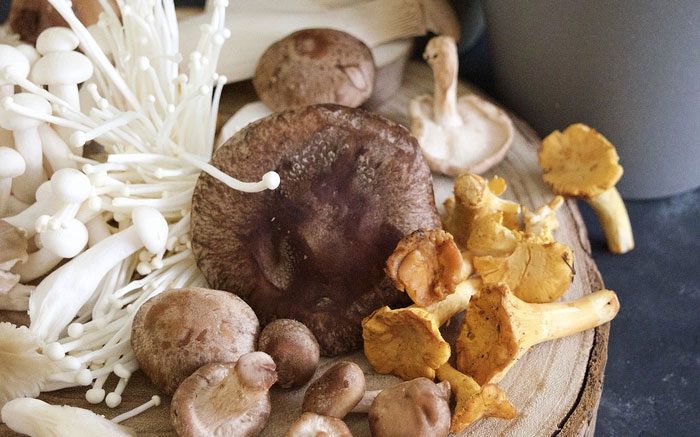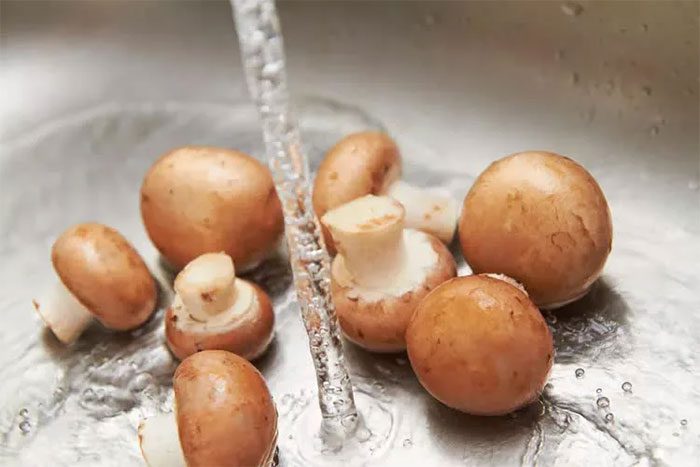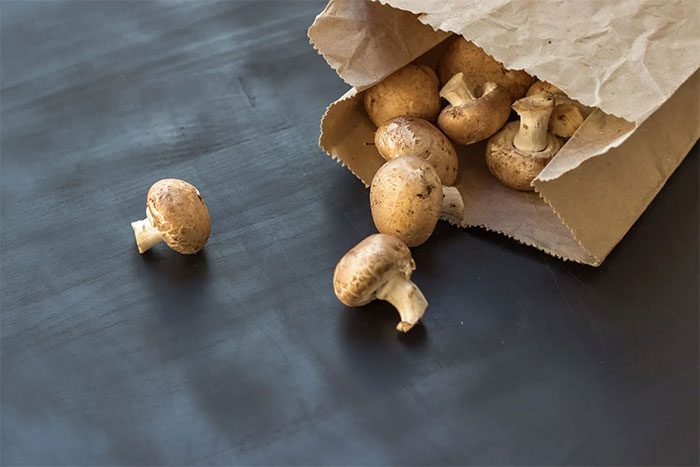Mushrooms are a widely used ingredient in vegetarian meals and have numerous health benefits. However, there are certain foods that should not be combined with mushrooms, which you should be aware of.
Important Considerations When Eating Mushrooms
To properly prepare mushrooms and maximize their nutritional benefits, you need to know which foods should not be combined with mushrooms, the potential side effects of eating them, and the mistakes to avoid when cleaning and cooking mushrooms.
1. Foods That Should Not Be Combined with Mushrooms
In Vietnam, there are about 100 edible mushroom species or those used for medicinal purposes (out of nearly 70,000 types of mushrooms). Edible mushrooms include straw mushrooms, shiitake mushrooms, wood ear mushrooms, king oyster mushrooms, butter mushrooms, sun mushrooms, reishi mushrooms, tea tree mushrooms, oyster mushrooms, pine mushrooms, snow mushrooms, enoki mushrooms, and white fungus.
According to Traditional Medicine, mushrooms are sweet and cool in nature, so they should not be combined with cold foods that can cause diarrhea, abdominal pain, or digestive disorders. Examples include duck meat, snails, radishes, and seafood.
Who Should Avoid Eating Mushrooms?
Excluding wild (toxic) mushrooms, most mushrooms are benign for everyone. However, the following groups should avoid eating mushrooms:
- People recovering from illness
- Those prone to diarrhea, bloating, or abdominal discomfort (due to weak digestive systems).

Mushrooms have many health benefits when prepared correctly. (Photo: Internet).
2. Negative Side Effects of Eating Mushrooms to Be Aware Of
Although mushrooms are known for their high nutritional value, rich in vitamins and minerals beneficial for health, such as fiber, protein, and abundant antioxidants, they can also cause some negative side effects if you are allergic or if the mushrooms are contaminated.
Food Poisoning
Food poisoning is a negative side effect associated with mushrooms contaminated with Campylobacter jejuni—one of the four main causes of food poisoning and diarrhea listed by the WHO. Those infected with Campylobacter bacteria often experience diarrhea (sometimes with blood), fever, and stomach cramps (abdominal pain). Occasionally, diarrhea may also be accompanied by nausea and vomiting.
Symptoms of food poisoning from Campylobacter jejuni typically appear within 2 to 5 days after consuming contaminated mushrooms and can last for up to a week.
Fortunately, this bacterium can be killed at high temperatures. Therefore, experts recommend cooking mushrooms for at least 10 minutes. Overcooking mushrooms may alter their flavor and reduce their crispness.
Additionally, you can also suffer from food poisoning when consuming mushrooms if they are cross-contaminated by other raw foods during preparation or storage.

Be cautious when selecting and preparing mushrooms to avoid food poisoning or bacterial cross-contamination. (Photo: Internet)
Skin Allergies
One of the side effects of mushrooms is skin allergies, with symptoms such as rashes and itching.
This can occur in individuals sensitive to components in mushrooms or reacting to mold spores that develop on mushrooms due to improper handling. Mold spores can lead to respiratory infections and even trigger asthma or lung diseases.
You can prepare mushrooms using the following steps:
- Use a small knife to scrape off dirt, cut off the roots, and remove any dirty parts of the mushroom.
- Then, use a toothbrush or a clean, damp cloth to scrub the entire mushroom from cap to stem.
- Wash the brush thoroughly and repeat the scrubbing until the mushrooms are completely clean.
Depending on the type of mushroom, you may need different cleaning methods. For instance, straw mushrooms often have a slightly musty smell, so after scraping off the dirty skin, soak them in diluted salt water for about 15 minutes, then rinse several times to clean them thoroughly and dry before cooking.
For fresh shiitake mushrooms, which require a certain crispness, you should wash them with cold water and avoid soaking them. When cutting mushrooms, gently tap the knife tip against the mushroom cap and shake to remove any soil attached to the underside of the cap.
Why Should You Limit Soaking and Washing Mushrooms?
Mushrooms are foods that easily absorb water, so soaking them for too long can cause them to become mushy and release excess water during cooking. It is best to wash mushrooms just before preparing them. Additionally, most mushrooms today are cultivated in clean environments, so make sure to choose reputable sources when purchasing mushrooms to ensure safety.

Avoid soaking or washing mushrooms for too long. (Photo: Internet).
Signs of spoiled mushrooms typically include a slimy texture, wrinkled caps and stems, the appearance of black spots, and an unpleasant smell.
Moreover, certain toxic mushrooms can cause hallucinations, delirium, and even death if ingested. Therefore, you need to distinguish between toxic and edible mushrooms based on color, shape, and taste. Specifically:
Mushroom Color
Most toxic mushrooms are bright colors such as red, orange, or yellow. Observing the mushroom cap, you might see vibrant colors along with red or black spots or streaks on the stem.
In contrast, edible mushrooms tend to have simpler colors, mostly with black, gray, or white caps (which can be easily confused with the highly toxic white mushroom).
Smell Test
When picking toxic mushrooms, the stems often exude a sticky sap that has a strong, bitter, and unpleasant odor—quite different from edible mushrooms, which have a mild or no aroma.
Observation of Mushroom Shape
Most toxic mushrooms have white gills under the caps. Edible mushrooms usually have gills that are nude (skin-colored) or brown.
Additionally, toxic mushrooms often have bright or dark scales that look like spots; the stems of toxic mushrooms have a ring surrounding the lower part of the cap.

Store fresh mushrooms in the refrigerator for a maximum of one week. (Photo: Internet).
3. What Is the Correct Way to Store Mushrooms?
Fresh mushrooms are best stored in the refrigerator rather than at room temperature. This is because mushrooms are composed of 80-90% water, making them susceptible to quick moisture loss and more vulnerable to bacterial invasion if left at room temperature.
When storing mushrooms in the refrigerator, place them in an area with minimal temperature fluctuations, such as the back of the fridge, preferably in a storage drawer. The maximum storage time for mushrooms in the refrigerator is one week. Sliced mushrooms stored in a similar manner can last about 2-3 days.
In general, the principle of mushroom storage is to avoid warmth and constant temperature changes in the storage environment. To safely eat mushrooms, consider consuming them gradually while observing your body’s reactions. Stop eating mushrooms immediately if you experience abdominal pain, diarrhea, bloating, rashes, or other alarming signs like difficulty breathing or dizziness. At this point, you should seek medical attention as soon as possible to receive appropriate treatment from a doctor.


















































